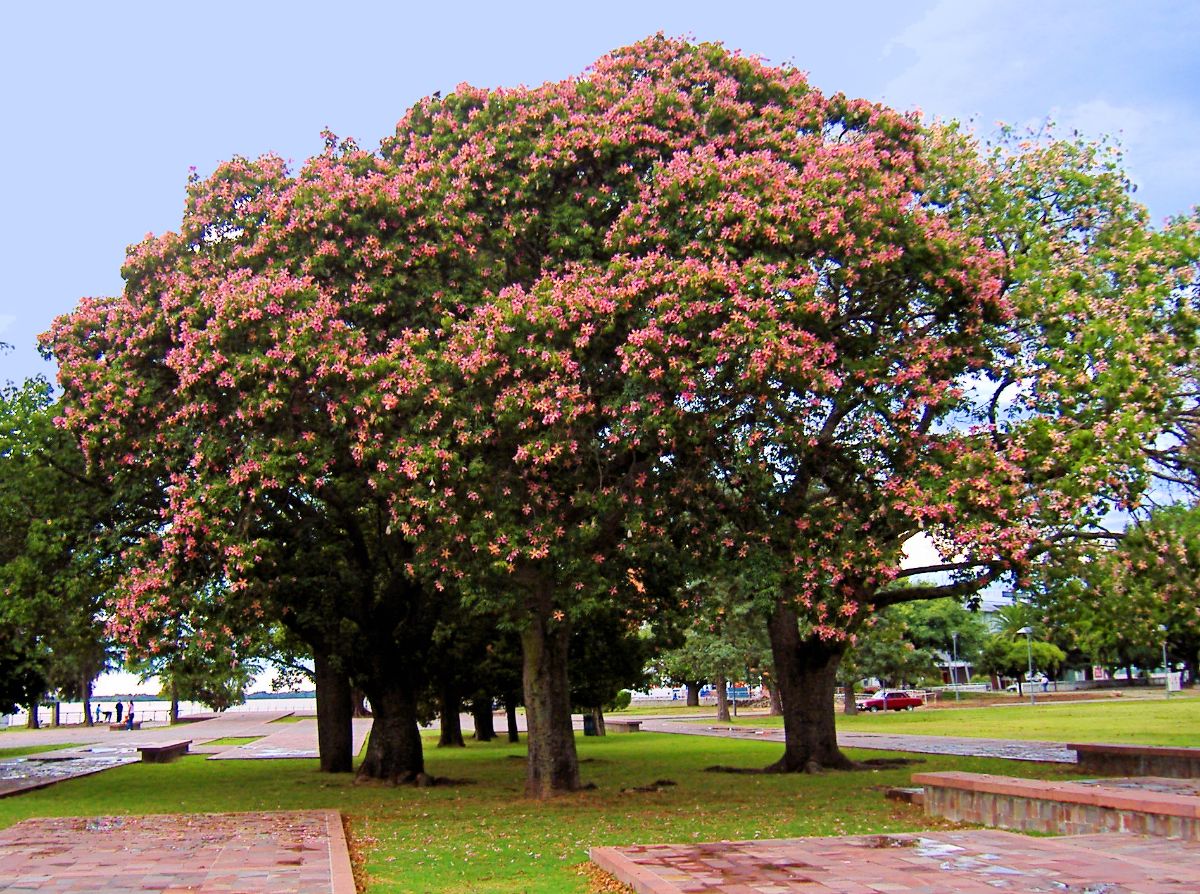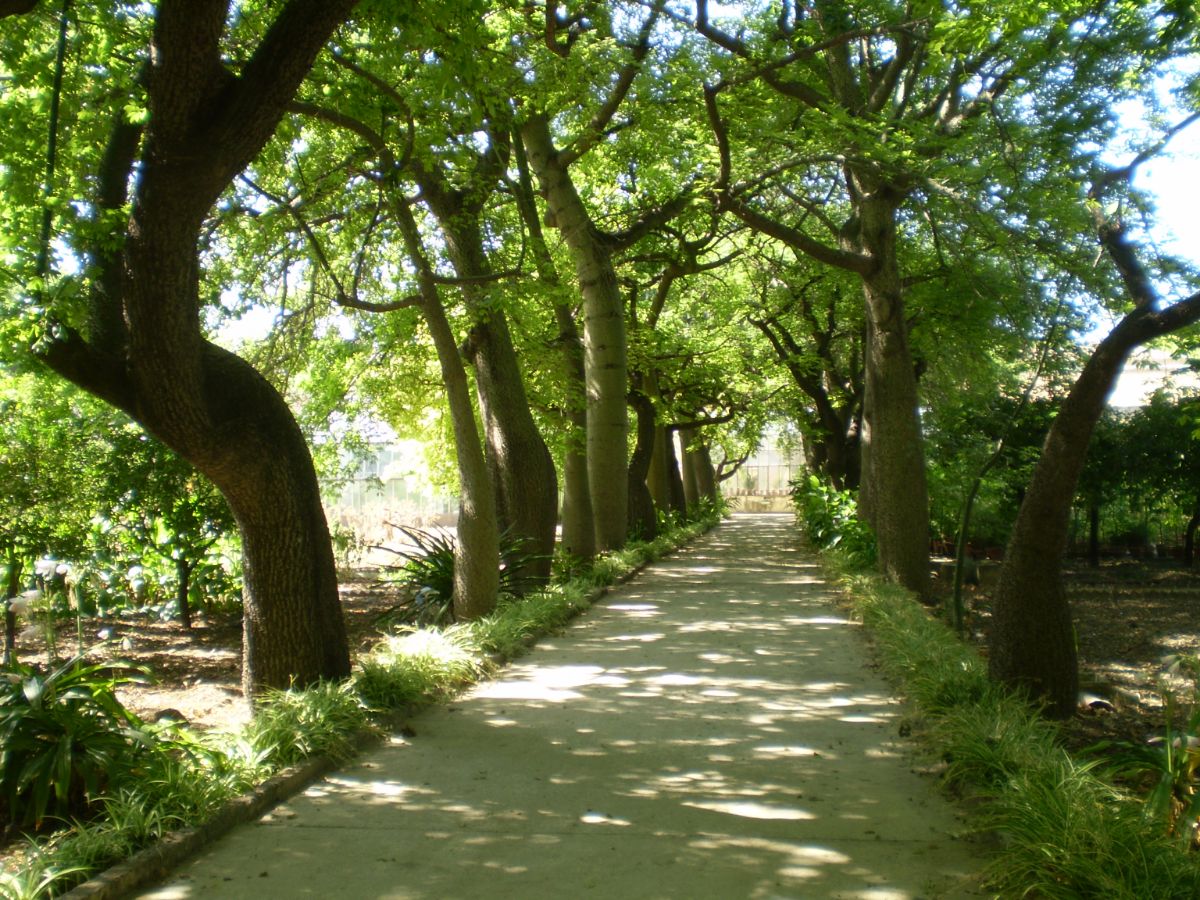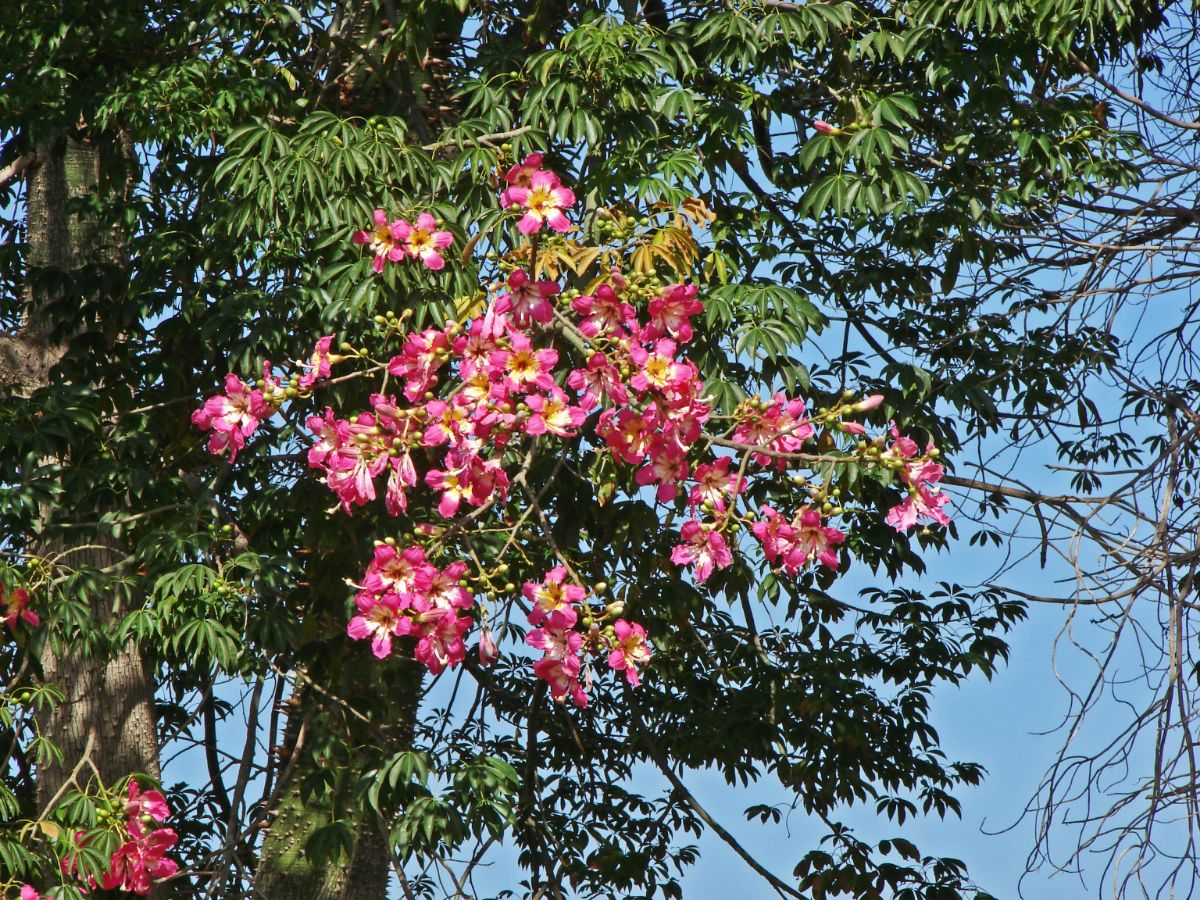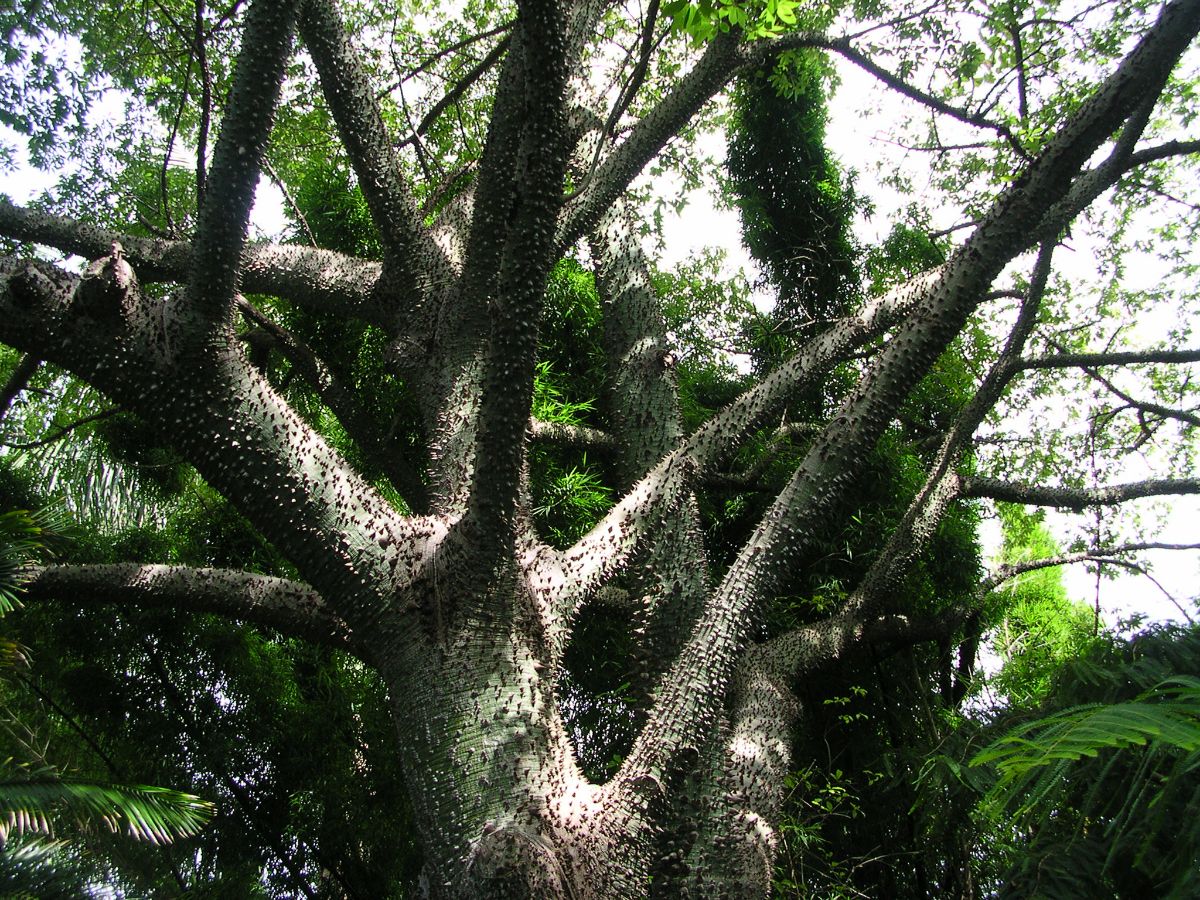
You may have heard of the tree ceiba speciosa, better known by the common name of palo borracho, due to its curious shape. Perhaps, once you see it, you want to have it in your garden, or even in a pot, but you don't know how to provide the drunken stick with the care it needs because it is not a common plant.
However, we must start from the basis that it is one of the easiest trees to care for and, if you take into account the needs, it will not give you any problem. But what are those needs? We will tell you about them below.
What is the drunken stick

As we have mentioned before, the 'drunken stick' is how the tree is known ceiba speciosa. But it is not the only name. It is also called a bottle tree, a painera tree or a pot-bellied tree.
It is a tree that can easily reach 25 meters in height and yes, it has flowers. These appear during the spring and summer and can be pink or lilac, but also with some white inside. These give rise to a small oval fruit, about 20 cm and greenish-brown in color. When it matures, it opens in such a way that it shows a kind of white cotton where the seeds are to be able to multiply.

The trunk is quite wide (it can reach 2 meters in diameter) with a green to gray bark, conical spines and a very dense and rounded crown. And why is it called a drunken stick or bottle tree? Well, because of its shape, which looks like a bottle (wider at the bottom than at the top). In addition, one of the characteristics that it has is that it is capable of storing water.
Now, it is deciduous, so in mid-autumn it begins to lose its leaves.
This tree is native to tropical and subtropical areas, focusing mainly on America, Peru, Brazil, Paraguay, Bolivia ... This does not mean that it cannot be found in Spain, in fact it can, specifically in the Mediterranean area and in the South.
Drunken stick care

The first thing you should know is that It is a recommended tree for beginners. That is, as long as you provide the minimum care (location and temperature), the rest will not be difficult to keep it alive, whether you have it in the garden or in a pot.
Specifically, the care to take into account we will tell you below.
Location and temperature
As we have told you, its natural habitat is tropical and subtropical climates. This means that it does not tolerate low temperatures at all. Implying? Well, what do you have to place it in areas where winters are mild, hence it is said that it is best used in the Mediterranean and coastal areas.
Regarding your location, it is very important that it is given many hours of sun. In fact, planting it in full sun would be ideal, with nothing to shade it. In addition, it grows very fast and needs space both vertically and horizontally.
Earth
The drunken stick not too demanding in terms of the type of soil what to provide; in fact it is capable of developing in any type of soil, although it likes those that drain very well and have many nutrients.
If you are going to plant it in the ground, you should make a deep hole and fill it a little with nutritious soil before putting the tree in it, so that it can develop much faster still.
In case of having a drunken stick in a pot you have to do the same, although we already warned you that if it grows very fast you will have to transplant it several times.
Irrigation
Drinking stick irrigation is one of the key care to take into account. Because of its shape, we know that it stores water, so nothing would happen if we forget to water it for a while, but it is not the most advisable thing to do. In fact, it is recommended that, in spring and summer, it be watered about 3 times a week; On the other hand, in autumn in winter it is possible that it can endure with one watering a week (in reality it would be medium, because half the water is added to it as one watering in summer).
In other words, in summer it should be watered 3 times with 4 liters each, and in winter it is enough with once and adding 2 liters of water.
Subscriber
Fertilizing the palo borracho is quite important if it is to sprout well and develop leaves and stems after winter. However, unlike with other plants, in this case the solid granule fertilizer. In addition, adding 3-4 kilos of compost or organic matter in early spring will benefit you a lot.
Plagues and diseases
Although it is a very hardy tree, and it is rarely affected by pests and diseases, it can suffer from them. The most common are mealybug, spider mite and aphid, especially in specimens that are not well ventilated or that are weakened.
Pruning
It is important, every winter, to prune, especially the first years of life. This will be the strongest, because throughout the year you could cut some branches for maintenance and to prevent them from losing their shape.
And what should you cut? Well the tips of the branches, always leaving the shoots in the direction we want. In addition, you have to eliminate branches that cross, that are very bent, damaged by the wind, etc.
It is about oxygenate the tree while giving it a more beautiful appearance.
Multiplication
Before we have told you that the tree itself gives you seeds to be able to multiply it. However, this only happens in adult specimens, so you would have to wait several years to get it.
But there is another option, and that is multiply the palo borracho by cuttings. These must have a minimum extension of 20-30 centimeters. It is difficult to obtain them, but not impossible. And it is that in order for roots to come out of these stems, stimulating root treatments must be applied.
Now that you know all the care that the drunken stick needs, it is time that, if you liked this tree, get one and start taking care of it. Who knows, maybe and it exceeds those 25 meters in height.